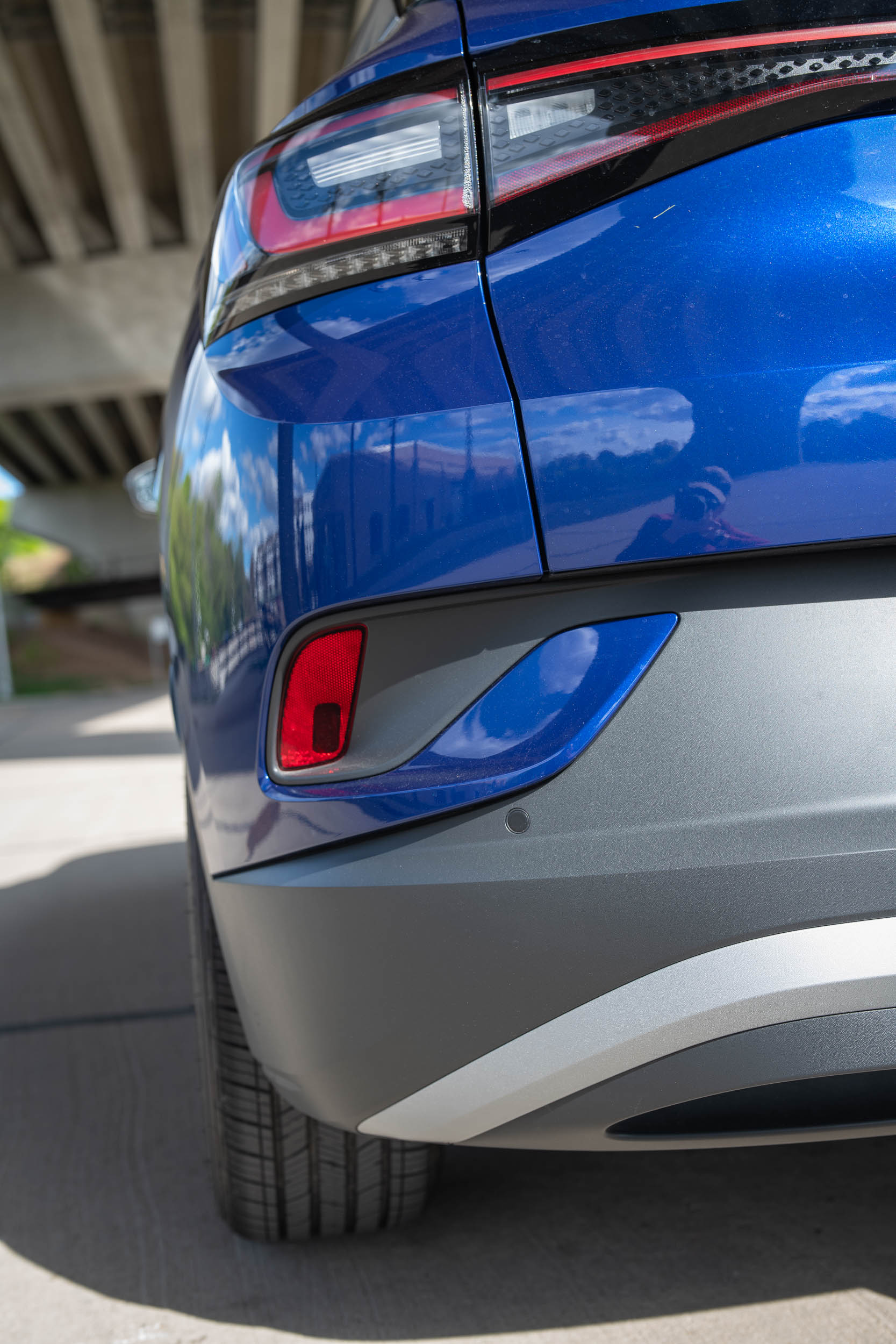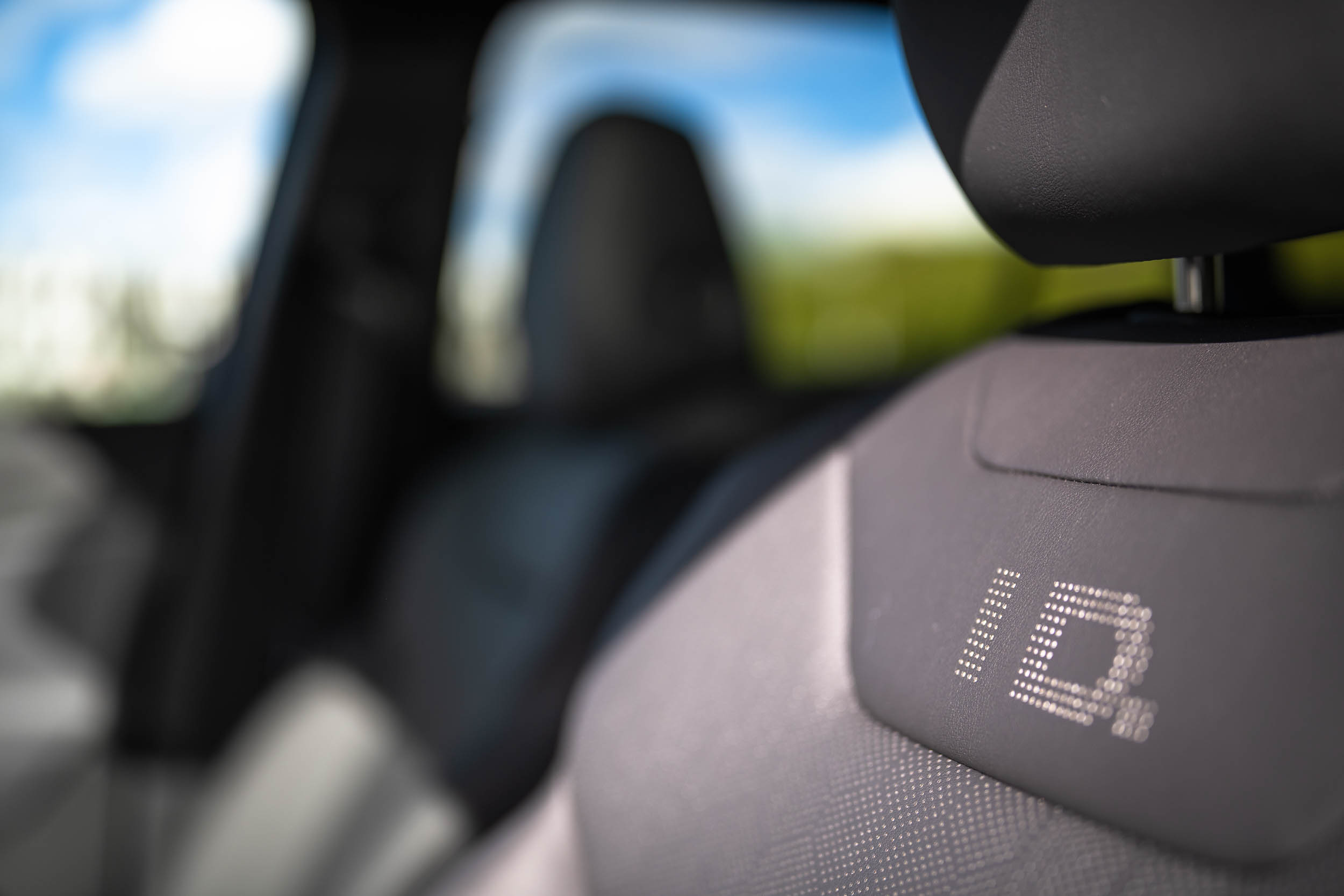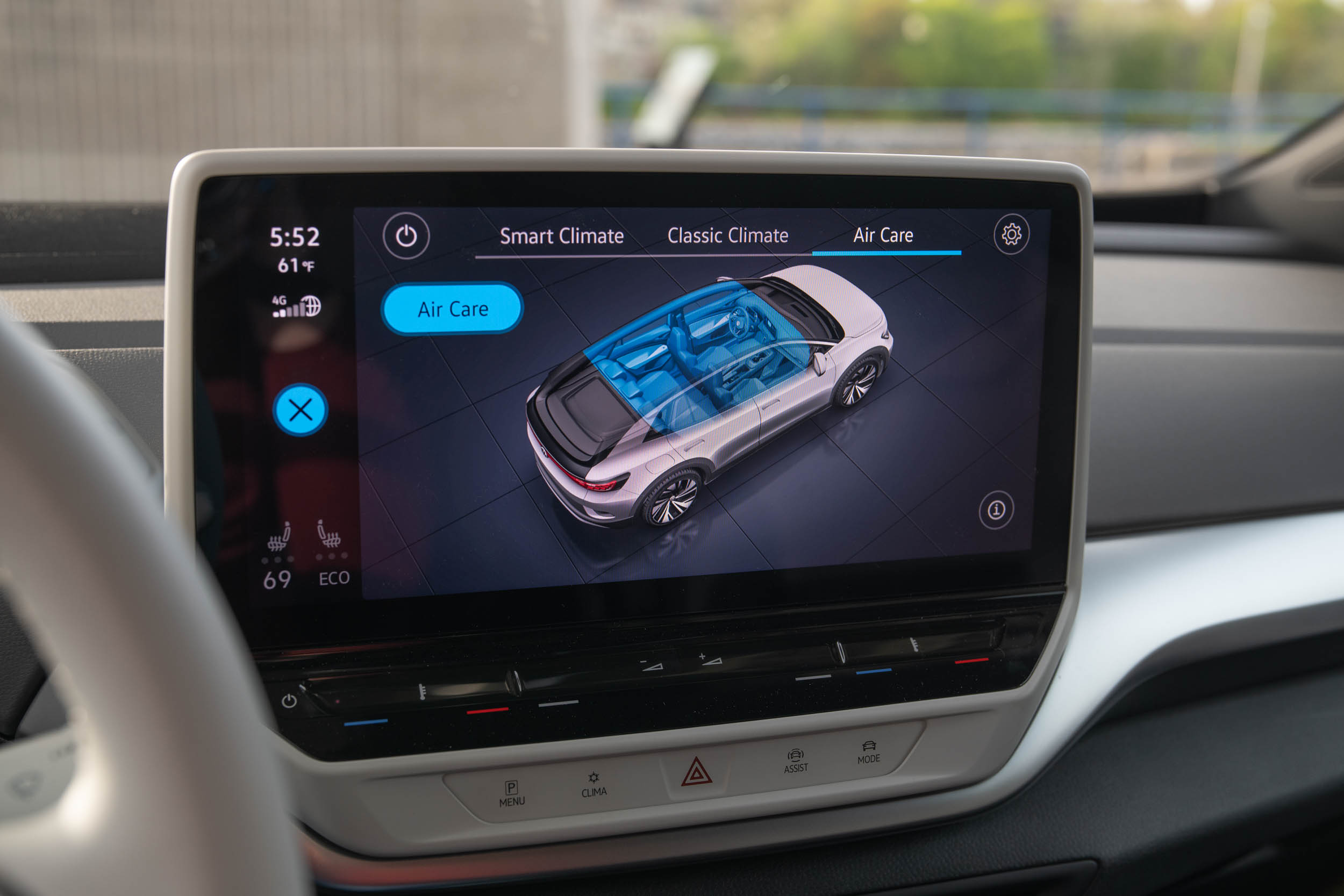2021 Volkswagen ID.4 – Not Ready for Prime Time

Words & Photos by Jennifer Jensen
HOME ON THE RANGE
Anxiety.
That is the overwhelming feeling I had during my entire week with the all-new Volkswagen ID.4.
Not because I thought the electric car was going to break, but because I was worried about how many miles of driving I had left. Range anxiety is an actual real feeling. And it sucks.
Where am I going to charge? How long will charging take? Where am I driving next and how much charge will that use? How many miles left? AHHHHHH!!!!!!!
This must be what a roaming lion on the plains must feel like, constantly worried about where the next meal is going to come from.
Why not just plug it in at home you ask?
Because on a standard 120-volt wall outlet the ID/4 charges at a rate of about 2-3 miles per hour. Yes, that’s per hour.
So if you drive 20 – 40 miles for work every day, or just running errands, that will take 10 – 20 hours to charge the standard 82 kWh battery up again.
The whole prospect changes if you have a level 2 charger at home. That is a 240-volt outlet similar to what your clothes dryer might use. Depending on the amperage of your 240-volt outlet (16-amp, 32-amp, 40-amp, or 48-amp) you can charge the ID.4 at a rate of up to about 30 miles-per-hour. Now we’re talking!
It is worth noting that Volkswagen only supplies the ID.4 with a 120-volt level 1 plug. That cable and plug store neatly under the load floor in the back.
I do not currently have a 240-volt level 2 charger at my house, just standard 120-volt outlets. Because of that, I have never looked at mileage more in my entire life. If I had a level 2 charger at home, my anxiety would have been pretty much non-existent.
Volkswagen claims a range of 250 miles when the battery is charged to 100%. The ID.4 was delivered to us with 215 miles of range remaining and I did all I could the first couple of days to keep range above 200 miles.
The great part is, if you don’t drive but a few miles each day you can keep your range up simply through regenerative braking. And in this area VW gives you the option.
THE TECH
The ID.4 has a single AC permanent-magnet synchronous motor that is good for 201 horsepower and 229 lb-ft of torque. That motor drives the rear wheels through a two-stage single-speed gearbox.
Unlike most automatics, the ID.4 gives you the choice of “D” for drive or “B” for brake. If you want to drive like you’re in a normal automatic car you put the rocker-type selector in “D.” In drive, the ID.4 will coast when you let off the gas pedal just like any other automatic-equipped car.
“B” is a whole different story. Select that and the ID.4 will provide maximum regeneration when you lift off the gas pedal. The electric VW won’t bring you to a complete stop but you can pretty much drive using just the gas pedal.
Is it still called a gas pedal when there is no gas? In a nod to the electrification of automobiles, VW put a “play” button on the gas pedal and a “pause” button on the brake. Cute.
Interestingly, VW went with disc brakes in the front and drums for the rear. The logic here is that the rear brakes won’t be used as often with regen duties taken by the front and according to VW, drum brakes in the rear will wear better over time.
THE LOOKS
What VW didn’t do with the ID.4 is break away from the current SUV / Crossover mold. I’m more than a little disappointed by this.
There is no internal combustion engine (duh) and the electric motor is packaged just above the rear axle (to help with handling) with the battery pack flat under the floor. That means the designers had a clean sheet of paper to create something truly unique and exciting. Instead we ended up with a vehicle that looks pretty much just like any other SUV on the road today.
There is no front trunk (frunk) and the storage space behind the second row is not overly spacious. Further, the second row seats do not recline though there is plenty of legroom for back seat passengers.
Hopefully with the upcoming ID.Buzz (the all-new electric VW bus) Volkswagen will stay true to the concept and have a flat floor throughout with the classically inspired exterior. I’m keeping my fingers crossed.
THE INTERIOR
VW did get a little creative on the inside of the ID.4. There is not a traditional instrument cluster for the driver. Instead there is a 5.3-inch screen that VW calls ID.Cockpit.
It is attached to the steering column so it will move when you tilt the wheel up or down.
That screen displays your speed, the charge state of the battery and a blue and green bar that tells you if you are using power or putting power back into the system. When you are in “B” it is unbelievably fun to watch that bar go back and forth between use it and charge it.
Also on the ID.Cockpit screen is a display that shows traffic in front of and around you. This comes in handy when using VW’s Travel Assist. More on that later.
On the center is a large 10-inch infotainment screen that is similar to other VW models. However, in the ID.4 we noticed considerable lag in the functionality of this screen that is unlike that in other Volkswagens. It would typically take two or even three seconds to swipe between screen displays on the infotainment.
That is a big detraction when you are trying to keep your eyes on the road. Especially when you consider that the HVAC is controlled through this screen.
At the bottom of the infotainment screen are sliders for the temperature (driver and passenger) and a slider for the volume. Just below that are haptic buttons for the main menu, climate control (to pull that screen up on the infotainment screen), hazard lights, driver assist and drive modes.
At the base of the front windshield is a light that runs across the entire length of the dashboard. The light bar is called ID.Light and it does different things depending on what the driver is doing. For example, it will signal that the car is listening when using voice commands, can help guide which direction to go in conjunction with the navigation system and also help indicate the current level of charge in the battery.
There are no actual buttons in the entire cabin other than the window switches. These deserve a special mention because the driver’s door only has two window switches. Look at the photos and you will clearly see that the ID.4 has four windows. So how does the driver roll down the rear windows?
Well, first you will have to tap the non-button in front of the window switches that says “rear.” It will probably take a few tries. Once that word is lit up you can control the windows in the second row. There is plenty of room on the driver’s side door panel so this wasn’t a packaging decision. That means someone at VW thought that putting an extra step into rolling down the rear windows was a good idea. They were wrong.
The steering wheel features a mixture of haptic slides and switches. In our long-term Arteon those controls are more intelligently laid out than in the ID.4. For example, the volume is a slider in the Arteon. It works great! Just slide your finger to the right for louder and to the left to quiet things down.
On the ID.4 the volume is a haptic feedback button. Push it again and again to turn up the volume. It’s certainly not as intuitive though once you get used to it they work okay.
There is a good-sized center console between the front seats. A rubberized charge pad will fit just about any smart phone for wireless charging. Wireless CarPlay, Android Auto and MirrorLink are included.
The rest of the cabin is pretty straightforward though much of it feels low rent with hard plastics that don’t feel good to touch. The seats are quite comfortable and there are (optional) armrests on the inboard side of both front seats. These are very nice as you can stop them anywhere along the path of travel to tune the seat to your liking.
There are also cell phone pockets on the back of the front seats. All manufacturers should add these clever pouches.
THE TECH
Other notable tech is something VW calls, “Hello ID” that is sort of like Apple’s Siri or Amazon’s Alexa. You simply say, “Hello ID” and then ask the car to do one of many different actions.
We tried this several times and were able to get the ID.4 to open and close the sunshade for the massive panoramic roof, turn the temperature up and down (Hello ID, I’m cold!) and turn the volume down on music.
I will say that it is not a perfect system. For example, using Hello ID to open the shade for the panoramic roof took about five minutes. The system kept offering up things I didn’t ask it to do.
However, with the ID.4, Volkswagen has introduced an all-new network architecture. There are two central computers that VW calls ICAS, an abbreviation for In-Car Application Servers. The big pro to this new architecture is that the system can be updated meaning the ID.4 can improve sort of like the operating system on a smart phone. Hopefully Hello ID will improve with age.
Then there is Volkswagen’s Car-Net. This is an application that can be added to a smart phone to control different aspects of the vehicle. Car-Net is available on other VW models but the biggest pro to having it with the ID.4 is the ability to monitor charging while you are not with the car.
This came in very handy during our week with the ID.4.
CHARGE IT
Because of the aforementioned concern about charging I never charged the ID.4 at my house. Instead we were afforded the opportunity to use fast chargers at one of our local VW dealerships.
The first time I charged the ID.4 the range had dipped below 160 miles. We needed to make a grocery run for the week and decided to take two cars. We drove the ID.4 to the dealership and plugged it in.
That process was simple and easy and the charge plug actually locks onto the vehicle while in a charging state.
Once we confirmed that the ID.4 was indeed charging we took off in our other car to run a few errands and go grocery shopping.
While doing those things I kept checking the Car-Net app on my phone.
1:45 to maximum charge…
Stop at a bookstore. Check out the magazines and purchase a book.
1:35 to maximum charge…
Stop at the pet store to get kitty litter pads.
1:20 to maximum charge…
Arrive at the grocery store and start shopping.
:05 to maximum charge…
In the checkout line at the grocery store.
Our timing worked out quite well. We got back to the ID.4 and had a 258 mile range! Nice!
THE RIDE
With the batteries at maximum juice it was time to fully exploit the power of electric driving…torque on demand.
Here the electric VW was a bit of a letdown as well.
Stomp firmly on the Play pedal and the ID.4 takes off with authority but not in the lightning quick fashion we had hoped for. Instead a romp to 60 miles-per-hour will take about 7.5 seconds. Not the worst thing in the world, but certainly not the fastest electric vehicle on the market. Then again that is probably not VW’s goal here.
But my harshest criticism of the ID.4 is in the ride department. It is simply too rough.
The ID.4 does have Driving Mode Selection, which lets you choose between Eco, Comfort, Sport and Custom. The ride in Comfort is good over smooth pavement but as soon as there is any sort of break up in that pavement hold on tight because this horse is about to buck.
That’s in COMFORT mode. Put it in Sport and things get worse.
It is quite disconcerting because otherwise the ID.4 rides very well. It should with a curb weight of around 4,600 pounds. It’s also disappointing because VW is usually so good at fine-tuning suspensions.
Perhaps this new skateboard architecture with all the weight at the bottom is something they will get better with over time. Fingers crossed again.
Speaking of architecture, the ID.4 is built on VW’s new MEB architecture. Like the company’s MQB platform, MEB is a modular platform that can underpin a variety of vehicles but MEB is specific to electric vehicles.
SAFETY
Built into this new platform are a number of safety features to protect occupants in case of an accident.
The battery is made up of 288 pouch cells housed in 12 modules. The housing is bolted right to the frame to help with rigidity and that housing is caged with an extruded aluminium frame. Between the battery and the road is a replaceable aluminium panel. In case of an accident, the battery is immediately disabled. That could pose a problem with the ID.4’s electric door latches. I am assuming there is some safety mechanism built in, but I don’t know that for sure.
Those electric-release door handles are mounted flush to the exterior of the ID.4 in an effort to reduce wind resistance. The wheels are also designed to minimize the interruption of airflow around the electric VW.
THE EXPERIENCE
The driving experience itself isn’t too dissimilar to driving any other car. That is VW’s intention with the ID.4. Make it different, but not so different that you’re going to scare people off.
There is a start/stop button located on the side of the steering column, but you don’t need it. Climb in and flip the rotary gear selector to D or B and off you go.
Once you get where you’re going you don’t need to turn off the ID.4 either. Undo your seatbelt and get out and the car is turned off. It takes a little getting used to, but the immediacy of the experience is lovely.
There is a quirk with this logic though. If you want the vehicle to turn off, say to conserve energy, but you are not going to get out the ID.4 will not turn off. The way to sidestep this is to sit in any other seating position other than the drier’s seat.
I learned this on our second day with the ID.4 when I was waiting for someone to meet me in a parking lot so I could show him the ID.4. I had to wait about 15 minutes and the car would not shut off as long as I remained in the driver’s seat.
When I moved to the second row everything shut off the way it was supposed to.
I really enjoyed using the ID.4 around town. Running errands that are short trips when I could use the brakes to keep the battery from losing too much power.
The vehicle makes noise when you are rolling around under 20 mph to alert passersby that you are there. Because if there is one thing the ID.4 absolutely is, it is quiet.
Get on a highway and watch your range disappear with every passing mile. Without the benefit of regenerative braking every mile you drive is a mile lost. Then you should make sure you have something to do while sitting on a charger for awhile.
My second time charging the ID.4 was similar to the first except I sat in the car and waited. For an hour and a half. During that 90-minute period I went from a range of 160 miles to 250.
Again, if I had a level 2 charger at home none of my range anxiety would have been there. But EVs won’t be able to replace ICE vehicles until the infrastructure is there to support them. That includes chargers at home.
SUMMARY
As for the ID.4 it’s not quite there yet. The suspension needs some serious adjustments and interaction with controls needs to be improved. If, for example, there was a simple row of actual buttons to control the HVAC that would go a long way to increasing user satisfaction.
The ID.4 is a very good first step though. It has usable range and plenty of room for four or five adults. If you bounce around town and only drive a few miles on any given day, vehicles like the ID.4 are going to be perfect for you.
It’s not a corner carver but it is an efficient tool to move people around. It is an appliance and while vehicles like the ID.4 are certainly our future, I’m going to hold on to the past for a while longer.





































